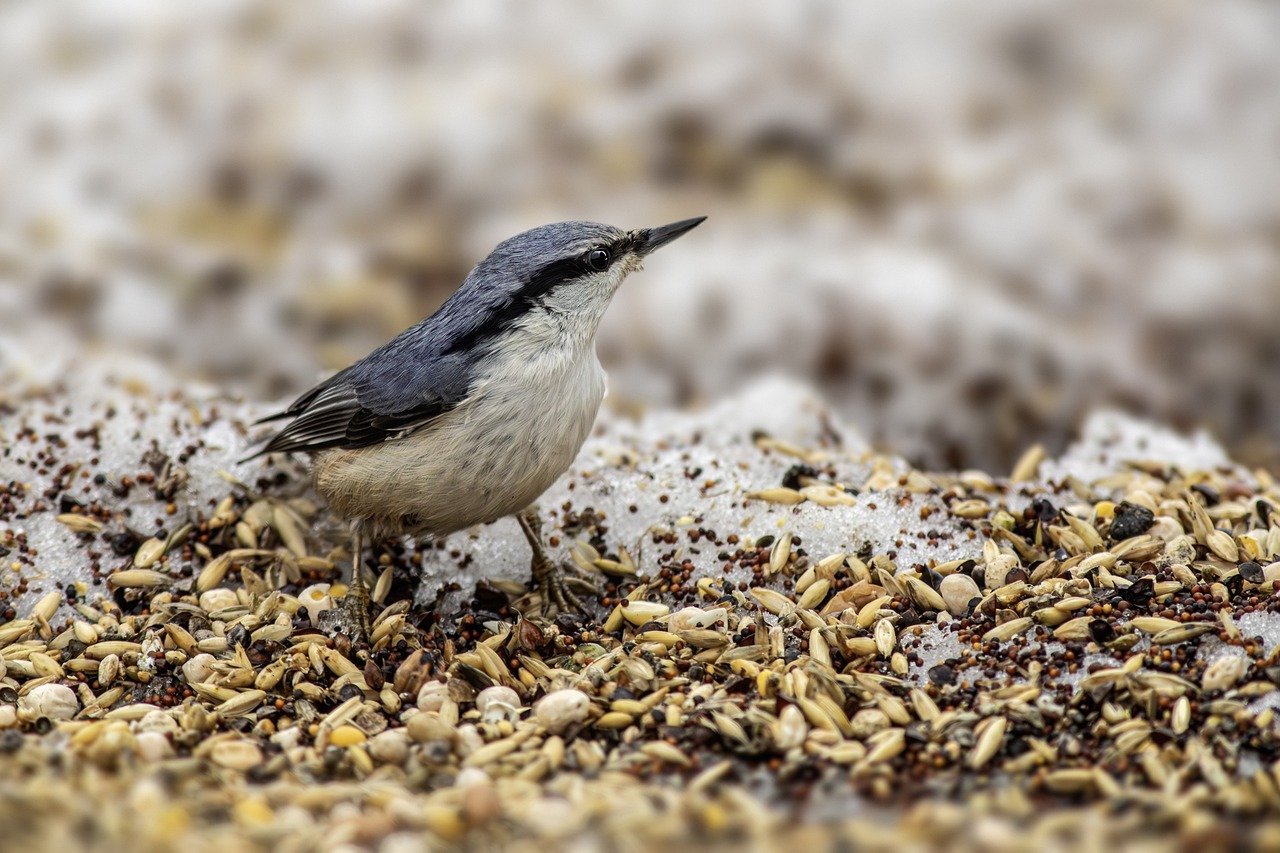That’s a great choice! The Eurasian Nuthatch (Sitta europaea) is a unique and endearing little bird, famous for being the only bird in its range capable of climbing head-first down tree trunks.
Here is a deep review of its key characteristics, biology, and specialized behavior.
🌳 Eurasian Nuthatch (Sitta europaea) Deep Review
1. Identification and Morphology
| Feature | Detail |
| Size | Small, stocky bird, similar in size to a tit, typically 12–14.5 cm (4.7–5.7 in) long. |
| Plumage | Blue-grey upperparts (mantle, wings, and tail) and pale buff to rusty-orange underparts (flanks and breast). The color of the underparts varies geographically, being paler in the north and darker/richer in the south. |
| Head Markings | Features a prominent, dark black stripe (lores and eye-stripe) that runs from the bill, through the eye, and towards the shoulder. |
| Bill | Strong, long, and chisel-like; essential for extracting insects from bark crevices and cracking hard nuts. |
| Legs and Feet | Possesses exceptionally large, strong feet and long claws. Unlike woodpeckers and treecreepers, which climb using their tail as a prop, the Nuthatch relies solely on these powerful, hooked claws. |
| Sexual Dimorphism | Males and females are very similar, though the male often has a richer, more uniform chestnut color on its flanks, while the female’s flank color may be slightly duller or paler. |
2. Habitat and Distribution
- Geographic Range: Wide distribution across the temperate and boreal forests of the Palaearctic, spanning most of Europe, Russia, and temperate Asia, reaching China and Japan.
- Habitat Preference: Strongly associated with mature deciduous or mixed woodlands, particularly those containing old oak and beech trees. It avoids coniferous forests that lack deciduous elements.
- Key Requirement: They require trees large enough to provide both deep bark crevices for foraging and suitable natural cavities or old woodpecker holes for nesting.
- Residency: The Nuthatch is highly sedentary and non-migratory. Once established, pairs often remain within their territory year-round for their entire lives.
3. Behavior and Ecology
Specialized Climbing
The Nuthatch is famous for its unique foraging style. It is the only European bird that can descend a tree trunk head-first. This ability comes from its specialized feet: its outer toes and powerful claws allow it to grip the bark and use one foot to anchor while the other controls the descent, unlike most birds which must hop upwards or sideways. This method allows it to spot insects and spiders missed by upward-climbing birds.
Diet and Hoarding
- Omnivore: Its diet varies seasonally:
- Summer: Predominantly insects, spiders, and insect larvae gleaned from bark crevices.
- Autumn/Winter: Shifts to seeds, nuts, and acorns (mast), particularly hazel nuts and beech mast.
- Hoarding (Caching): The Nuthatch is a diligent hoarder. It will spend autumn collecting and storing nuts and seeds in crevices, under moss, or by burying them in the ground. It often uses its bill to hammer hard nuts into bark crevices before cracking them open, earning it the nickname “nut-hacker.”
Reproduction and Nesting
- Cavity Nesters: They are obligate cavity nesters, preferring old woodpecker holes or natural rot cavities.
- “Daubing” (Mud Wall): If the entrance hole is too large for their liking, the female will use mud or clay mixed with saliva to plaster (or “daub”) the circumference of the entrance, reducing the opening to a snug, precise size that deters larger predators or competitors.
- Clutch: Lays 5–9 eggs on a nest cup built from small pieces of bark, moss, and sometimes animal hair.
4. Conservation
- Status: Generally classified as Least Concern (LC).
- Threats: While globally stable, its reliance on mature, old-growth deciduous woodlands makes it vulnerable to intensive forestry practices that remove old or dead trees, thus eliminating the crucial nesting and foraging habitat it depends upon.
Visited 875 times, 8 visit(s) today
Views: 1635
Subscribe to the newsletter:
